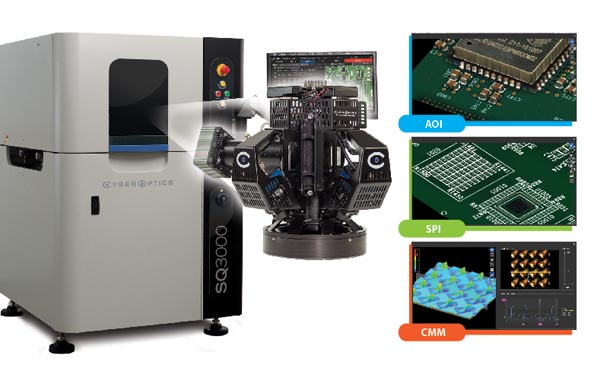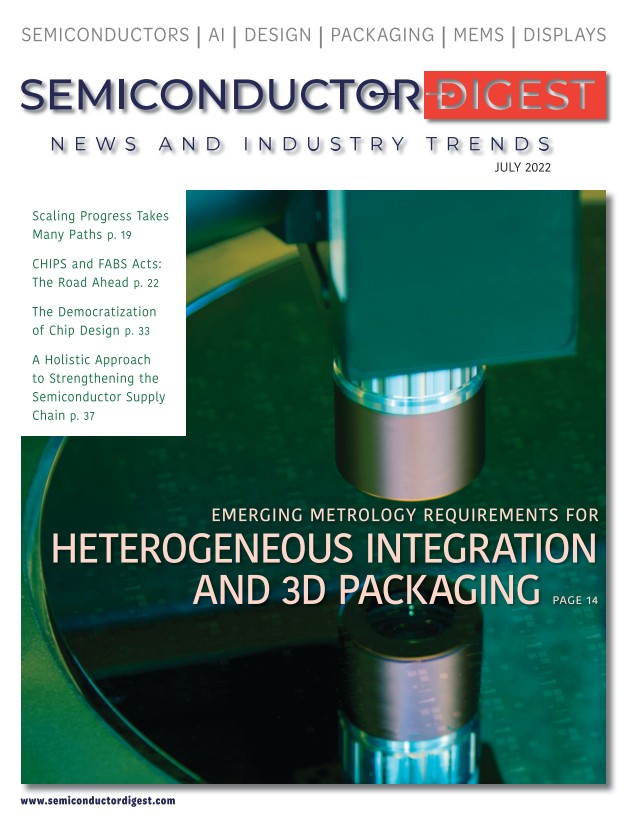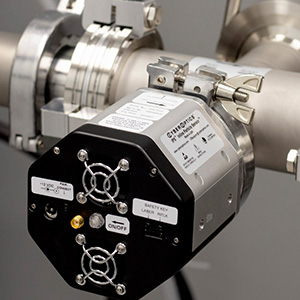Case Study – Deep Learning for Corner Fill Inspection and Metrology on Integrated Circuits
CyberOptics utilized deep learning to accurately inspect the corner fill on integrated circuits (ICs) produced by a large memory supplier. Traditional methods of inspection showed limitations in their ability to entirely detect the presence and absence of fill, indicating that a more advanced approach was necessary. CyberOptics drew on its large pool of algorithm and neural network expertise to produce a reliable, automated solution that addressed the inspection needs of the customer.
Challenge
The memory manufacturer was using fill surrounding the corners of an IC to bond the die to the substrate. The customer needed to inspect the presence and absence of the fill to ensure that there was neither too much nor too little. They required a solution which could measure the length of the corner fill and return an assessment of quality.
Traditional methods of corner fill inspection such as blob analysis can locate most of the corner fill, but a more robust approach was necessary to prevent false calls. The blob analysis algorithm attempted to find a continuous blob within a certain color intensity or contrast, and often detected a few blobs as separate entities when they may in fact be connected by some segment. The challenge was to know if the algorithm has correctly or incorrectly identified a breakage in the fill. This is a problem which traditional blob analysis algorithms in many AOI machines are not able to conquer.

Solution
As the customer needed to identify only the length of the corner fill, CyberOptics treated the programming as an object detection problem. CyberOptics’ team used transfer learning to save time. Transfer learning involves the use of a network architecture which has been pre-trained for a task, to which another class is then added and trained. Sophisticated deep learning (DL) algorithms were used for this application.
CyberOptics’ Multi-Reflection Suppression™ (MRS™) sensor technology that incorporates a unique camera architecture and sophisticated algorithms, provides an advantage vs competition in delivering high-quality images for machine learning (ML) programming.

The side cameras on CyberOptics’ high-resolution proprietary sensor in the SQ3000™ Multi-Function system were utilized to provide side-view inspection of all four component sides without additional mirrors, and without moving the components. These side cameras capture high-quality images without additional uptake or cameras.

For the memory supplier’s IC corner fill inspection needs, one simplified model was able to perform all necessary tasks, powered by DL. The program runs smoothly and delivers a simplified user experience.
Benefits
CyberOptics provided a high-performing, reliable and easy-to-use system for IC corner fill inspection using deep-learning-enabled object classification, detection, and transfer learning.
A feasibility study shows high robustness of the trained deep learning model in detecting and creating corner fills. The bounding box of the object detection program satisfies the customer’s need of measuring the length of the corner.
CyberOptics continues to develop machine learning capabilities to support customers with increasingly complex inspection needs. A vast domain of algorithm and neural network expertise enables the team to properly train models for specific applications. SQ software facilitates easy remote communication between CyberOptics and its customers, with the CyberOptics team able to train a model on one end and the customer able to run inference on the other end.
The room for growth in advanced capabilities powered by deep learning is boundless, and CyberOptics is gaining momentum establishing its market dominance with unique AI-enabled solutions that effectively address SMT and semiconductor customers’ challenging applications.
 Back
Back
 Back to News
Back to News








